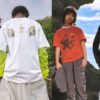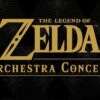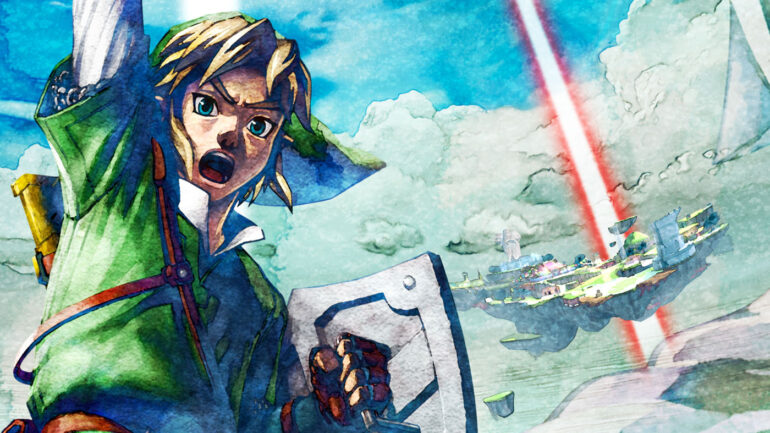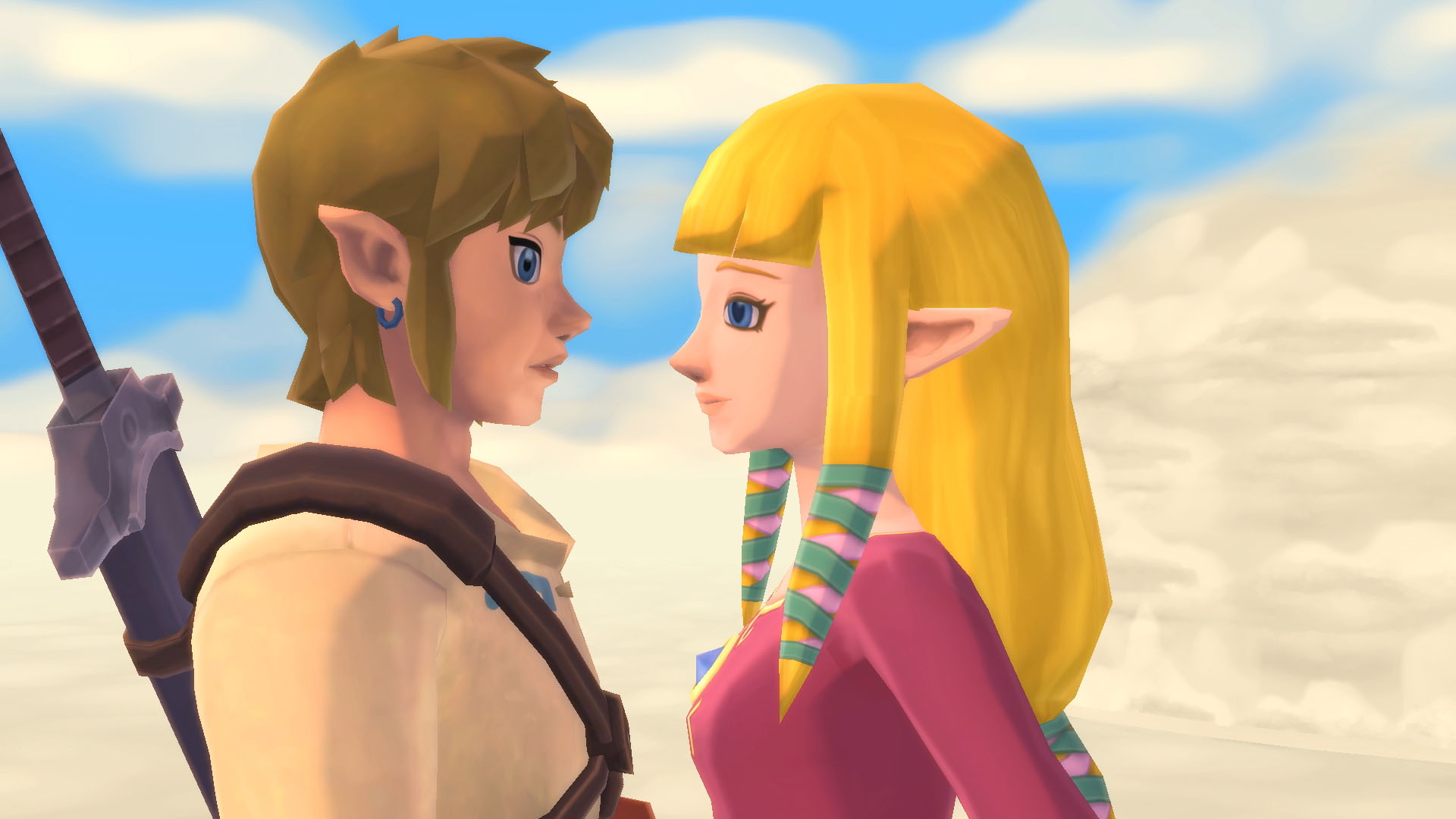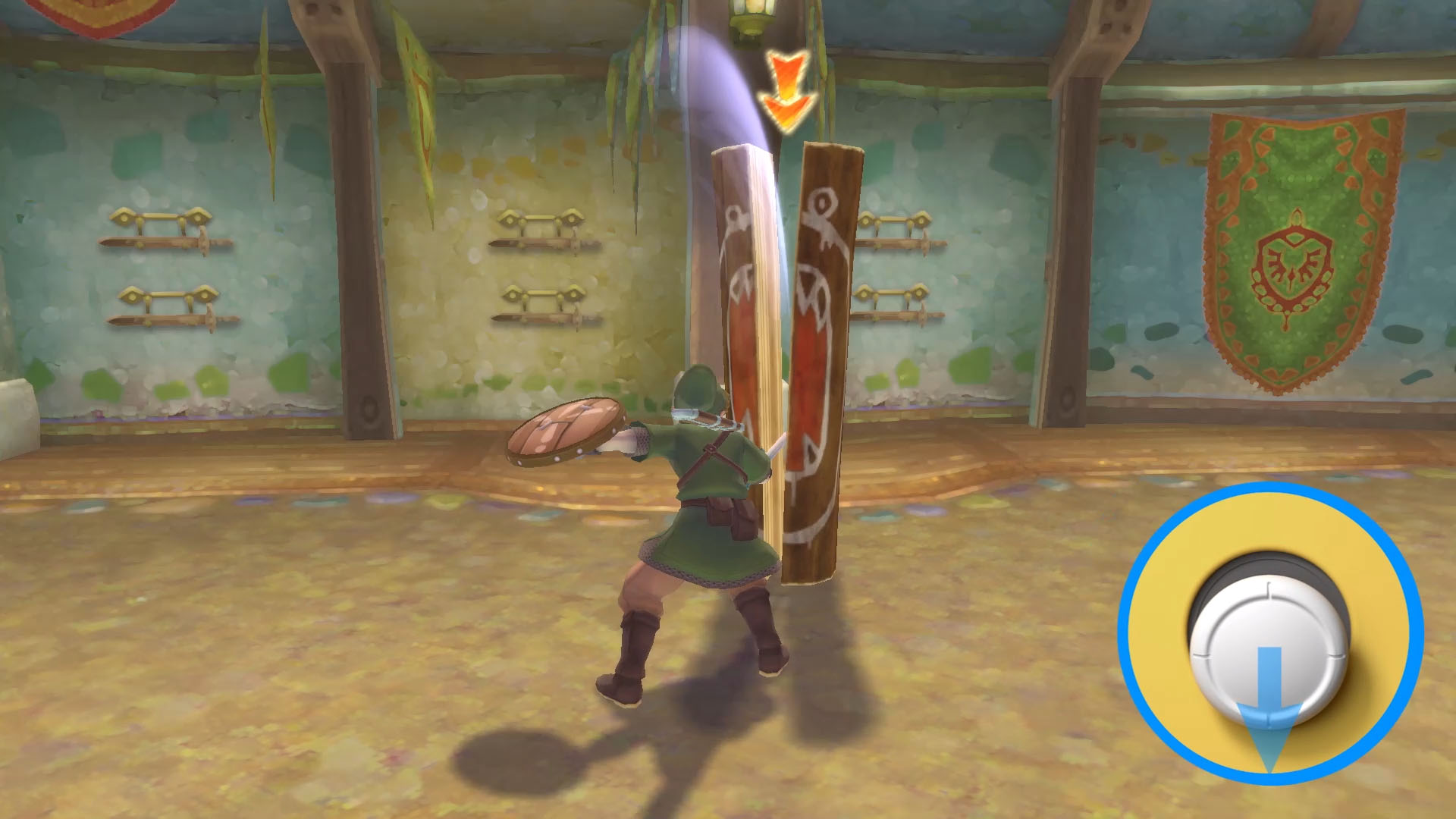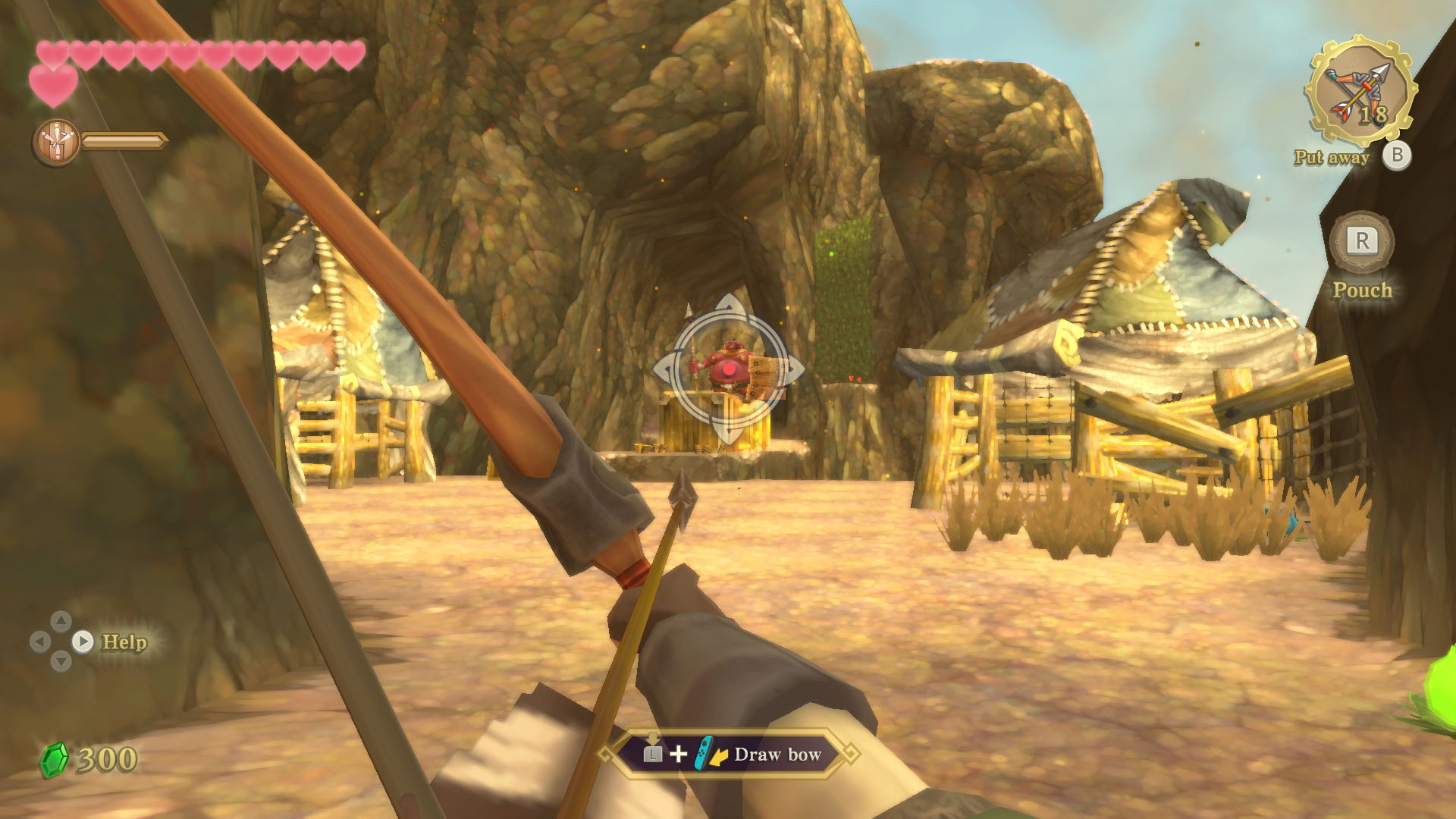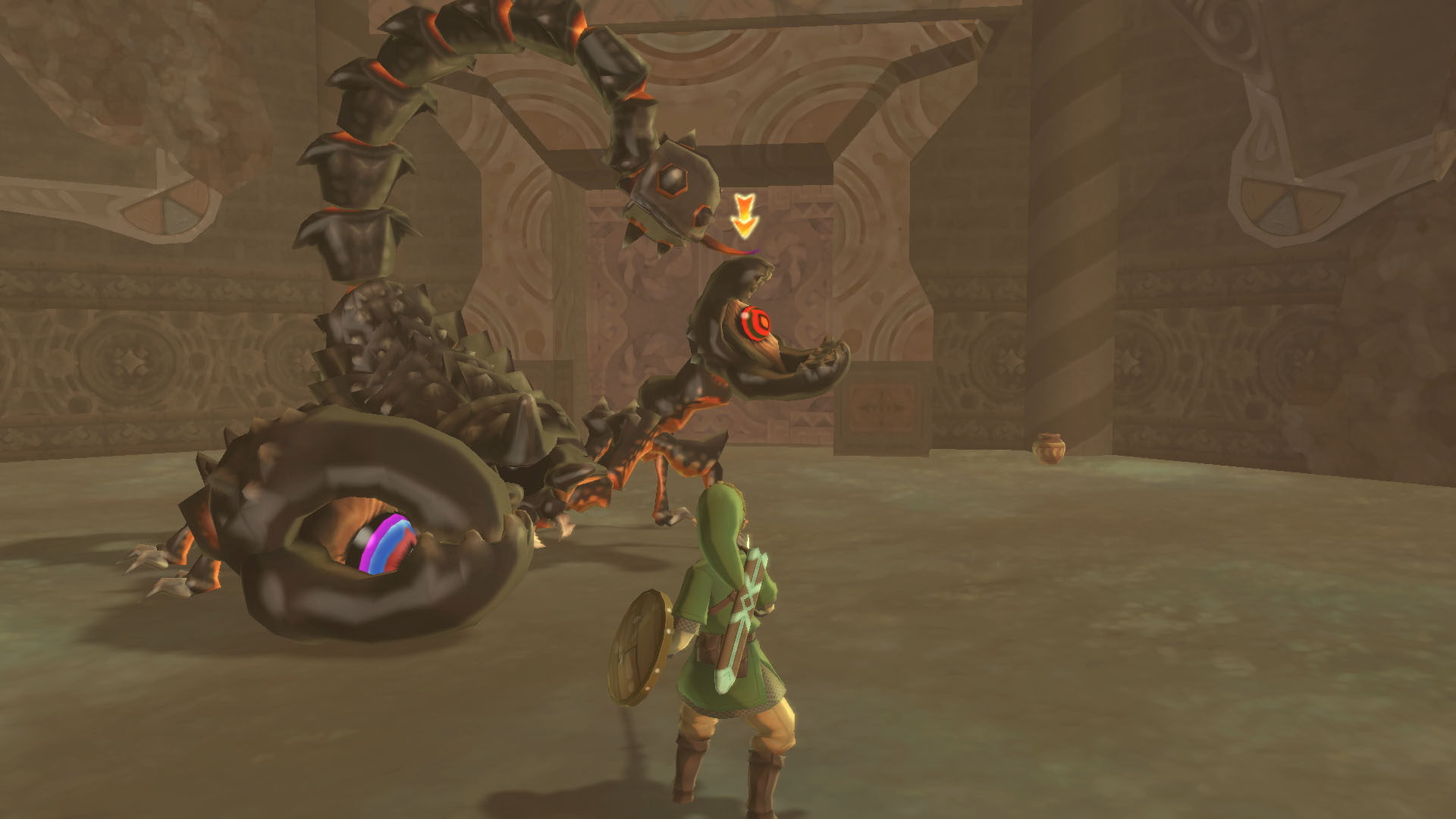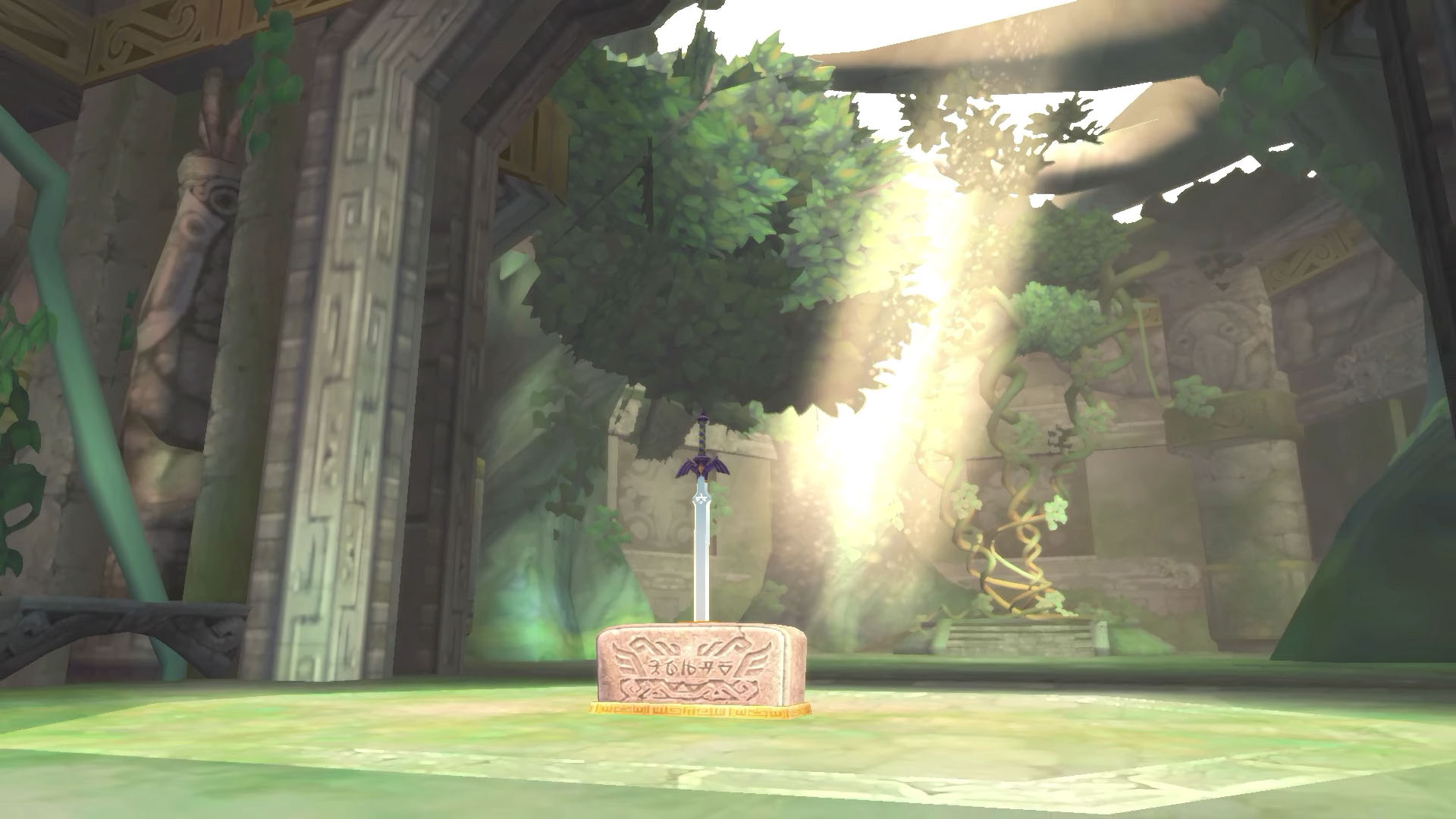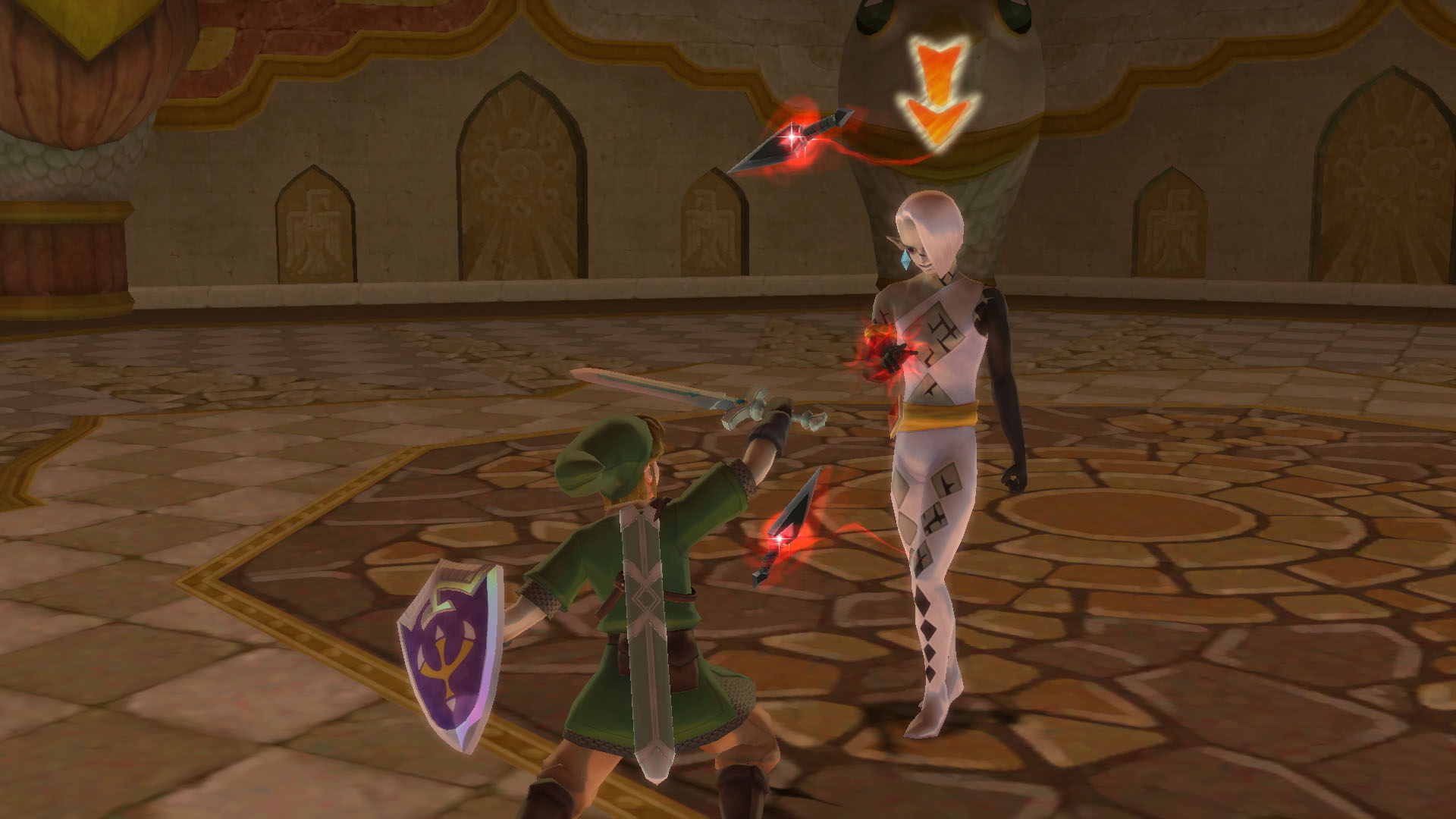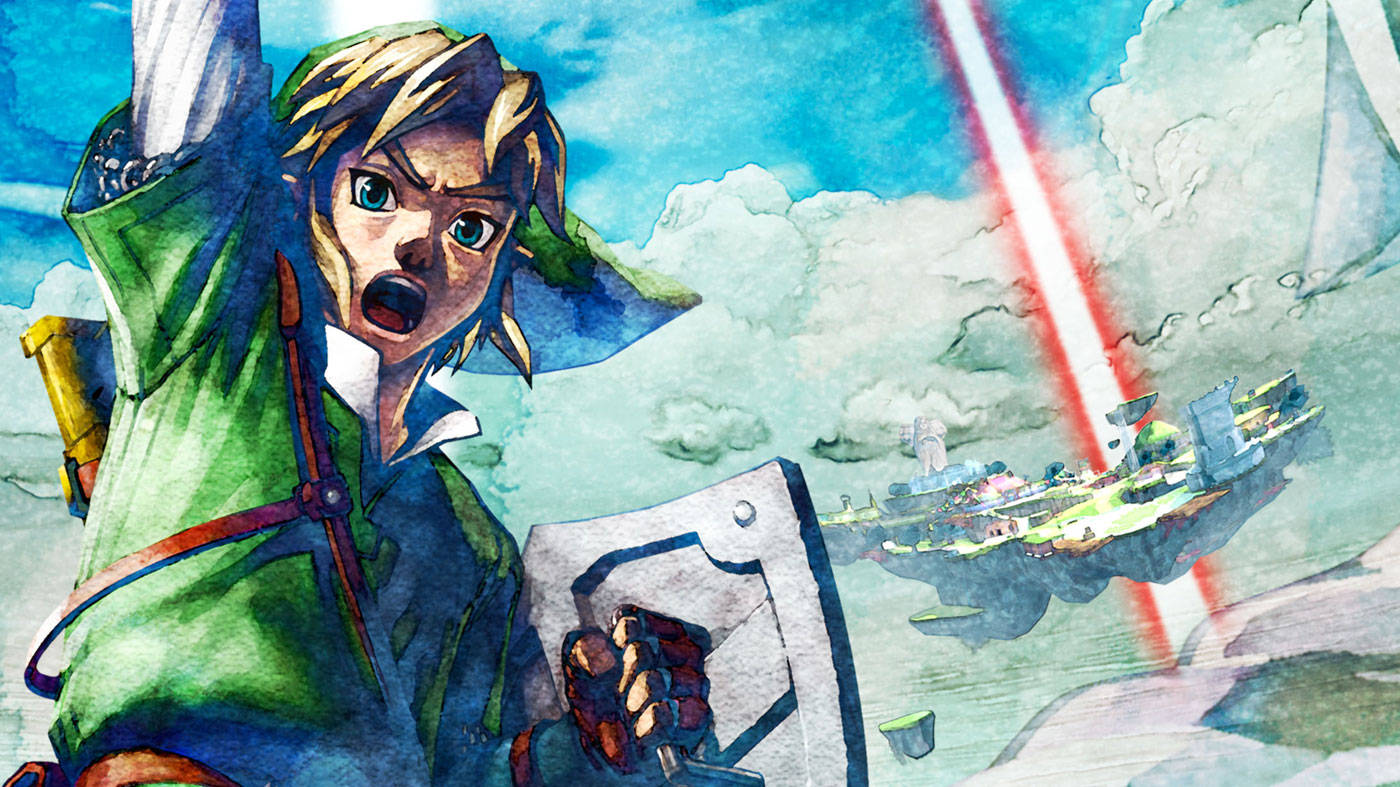Skyward Sword is the Zelda game I’ve thought about most. It’s the one that I’ve always thought if I’d returned to it, my opinion would change. Until now, I’d not revisited the game since I’d played it on the Wii almost ten years ago, but I was keen to see how its controls had held up. Thinking about the game’s design, I was convinced that Skyward Sword couldn’t work on anything other than a Wii. But with The Legend of Zelda: Skyward Sword HD, Nintendo is determined to prove me wrong. While this new version represents a new way to play the series’ origin story, I’m unsure which method is best.
As I’ve alluded to, from a story perspective, Skyward Sword feels like the most appropriate to celebrate The Legend of Zelda as it tells the very first story in the series. While it starts typically – a boy named Link goes about his day-to-day life until his close friend Zelda goes missing – it serves as a fantastic prequel that sets up the conflicts of the entire series. Either way, the plot does an excellent job at appealing to both long-time fans and newcomers to the series, even if it takes a bit to get going.
Perhaps the most controversial of the mainline Zelda games, Skyward Sword was the first game to implement compulsory full 1:1 sword combat using the motion controls of the Wii. The result was wildly inconsistent. On the one hand (literally), the sword combat was fun. Still, it lacked the consistency to be accurate with absolutely every slash. But motion controls felt shoehorned into areas of the game where they weren’t needed – think swimming and flying – to the detriment of the entire experience.
With Skyward Sword HD, motion controls become optional. If you were a player who enjoyed them on the Wii, they’re still here, and they work just as well (if not better) than in the Wii original. If you didn’t care for them, many of the game’s motions have now been mapped to the right stick of the controller. This feels like the best way you could play Skyward Sword without motion controls, though no matter which option you choose, the learning curve is a little bit steeper than other Zelda games. But once you get used to whichever control scheme you want, the game still plays well.
The decision to build Link’s sword around this style of combat is controversial. It allows for more precise control around how Link attacks. This way allows for interesting enemy design that requires the mastery of this combat style. Conversely, it feels like every encounter in Skyward Sword can be distilled down to the same “puzzle.” Look (or perhaps I should say wait) for the right direction to slash and make your move to cause damage. It’s that waiting that I take a bit of issue with, as it feels like it’s detrimental to the pacing of the combat.
The new control scheme eschews motion controls for a more conventional scheme and takes some getting used to. With the right stick reserved entirely for the sword, there is no camera control without holding down a shoulder button. Add to this the need to sprint by holding a face button, and things feel less than intuitive. Try to visualise it on your hands or controller right now. The problem here is that neither motion controls nor stick controls feel superior to the other. I commend Nintendo for providing players with a choice, nonetheless, but I’m still not sure which way is the best to play.
It’d be remiss of me to neglect to mention that the new control scheme is a remarkable improvement on other aspects of the game. Where they felt like a gimmick in the original game, using traditional inputs to control Link while swimming or flying is a genuinely fantastic quality of life improvement. Where in the original, you would contort your wrist so unnaturally to gain speed in the skies surrounding Skyloft, here in Skyward Sword HD, it’s all done with buttons.
So much of Skyward Sword HD is trying its best to improve the game’s general flow. The opening moments of the game are still slightly longer than I’d like, but so much of the tutorials have been scaled back or simplified to get Link out into the world quicker. Even better for those who’ve played before – most major cutscenes are now skippable. For the large majority that will be replaying the game, it’s a bit of a godsend. The abbreviated tutorials do well for newer players to provide relief but not completely alleviate the slower pacing of the game’s opening moments.
Other tinier details provide a bit of relief from the monotony of the original game’s pacing. While your companion character Fi is always brimming with advice for Link, that advice is now largely optional. They will pop out when called and give you advice when you’re looking at it, but not to the point where they interrupt ad nauseum as previously. Similarly – a small but huge change – is that the text boxes can be sped up. I can’t speak enough for how this improves the flow of important scenes. Going back to the original game, these often moved at a glacial pace, so I’m enamoured to see them sped up here.
While the controls do wonders for bringing Skyward Sword to as many people as possible – the game itself is wildly inconsistent. It’s tough to talk about Skyward Sword so definitively because of this. The highs are absolutely some of the most tremendous highs – each of the dungeons is phenomenal. I’d even go as far as to say the battle with Koloktos and the entirety of the Lanaryu Desert are series-best Zelda moments. But the game has you revisiting the exact same three locations multiple times to carry out so much busywork that it’s hard to compare it to the best games in the series favourably.
That being said, there’s something oddly nostalgic about playing a Zelda game that has designed dungeons and unique bespoke items to help you get through it. Skyward Sword especially does a great job of ensuring that Links inventory is utilised in intelligent ways throughout the adventure. The ingenuity on display here with items like the Gust Bellows, the Beetle, and the Whip gives me hope we’ll see a return to these aspects with future Zelda titles.
There’s one thing that’s absolutely certain with Skyward Sword HD. That’s the fact that it absolutely pops with the increase in visual fidelity. With an art direction that’s distinctly impressionist, I can’t help but feel this is one of the best-looking Zelda games. All the colours are bright and vibrant; the characters are all incredibly animated to make the world feel like a moving painting. Similarly, unlike any other Zelda on the Switch, the game runs at a silky smooth sixty frames per second with no performance issues whatsoever. Putting everything else I’ve said aside, I’ve no reservations in saying this is the best-looking Zelda game on the Switch.
When Skyward Sword was released almost a decade ago, it’s hard to imagine that it was the first Zelda game to feature a full orchestral soundtrack. Thankfully, it still retains the vibrant and expressive tone it delivered with some remarkably composed tracks all that time ago. Each one perfectly encompasses the mood and feel of the areas you’ll visit and with such a depth that hadn’t been experienced in Zelda games up until that point. If it weren’t any clearer – the original score is great.
Skyward Sword is inconsistent, but there’s so much done here that I can’t help but walk away feeling good about it. The game is linear, and the overworld is barren. Still, the dungeon design and most of the boss battles are nothing short of spectacular. While Skyward Sword isn’t my favourite Zelda, it has so many great moments that I wouldn’t suggest any Zelda fan miss it.
THE NINTENDO SWITCH VERSION OF THIS GAME WAS PLAYED FOR THE PURPOSE OF THIS REVIEW. A DIGITAL COPY OF THE GAME WAS PROVIDED BY THE PUBLISHER.
